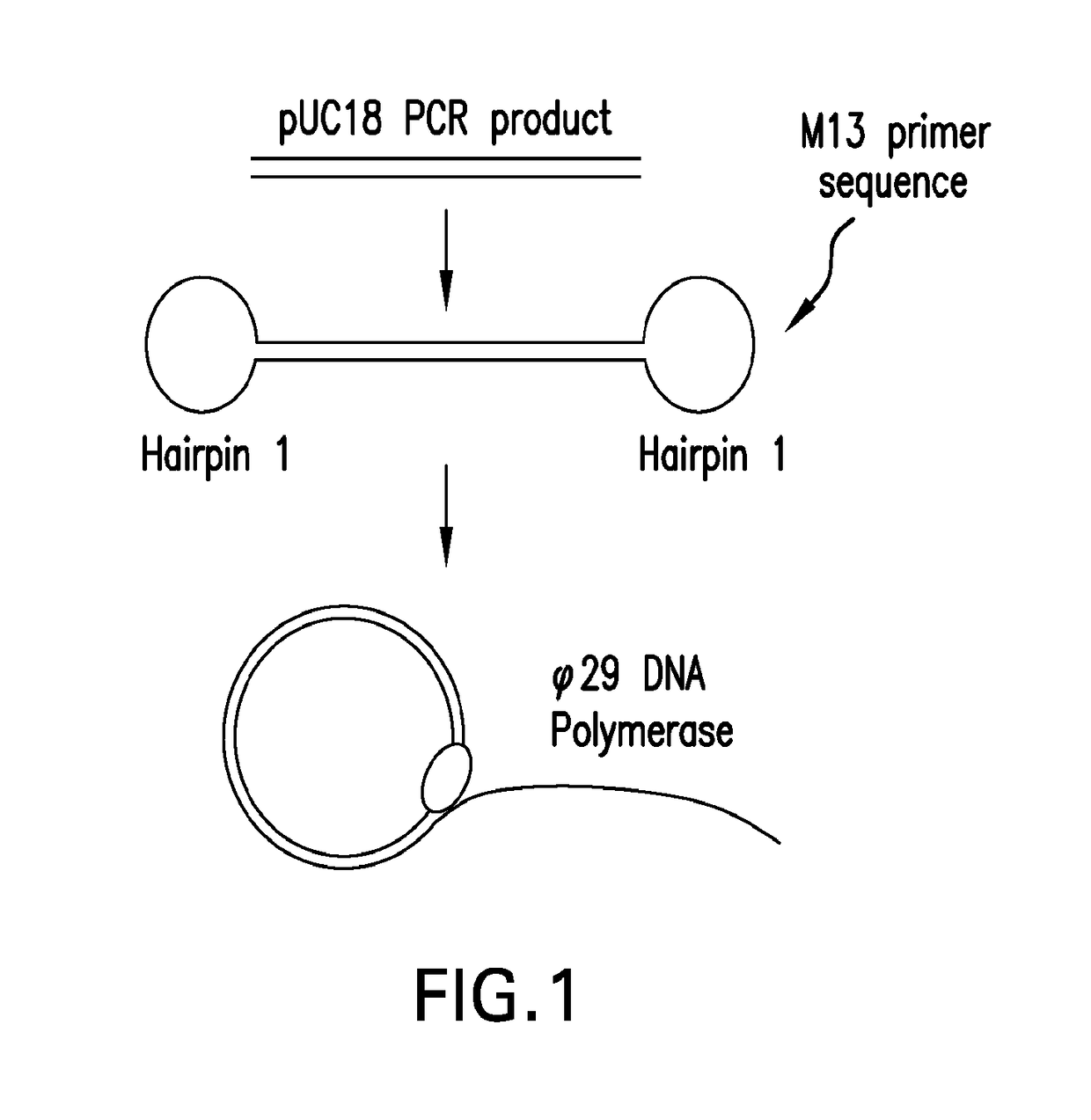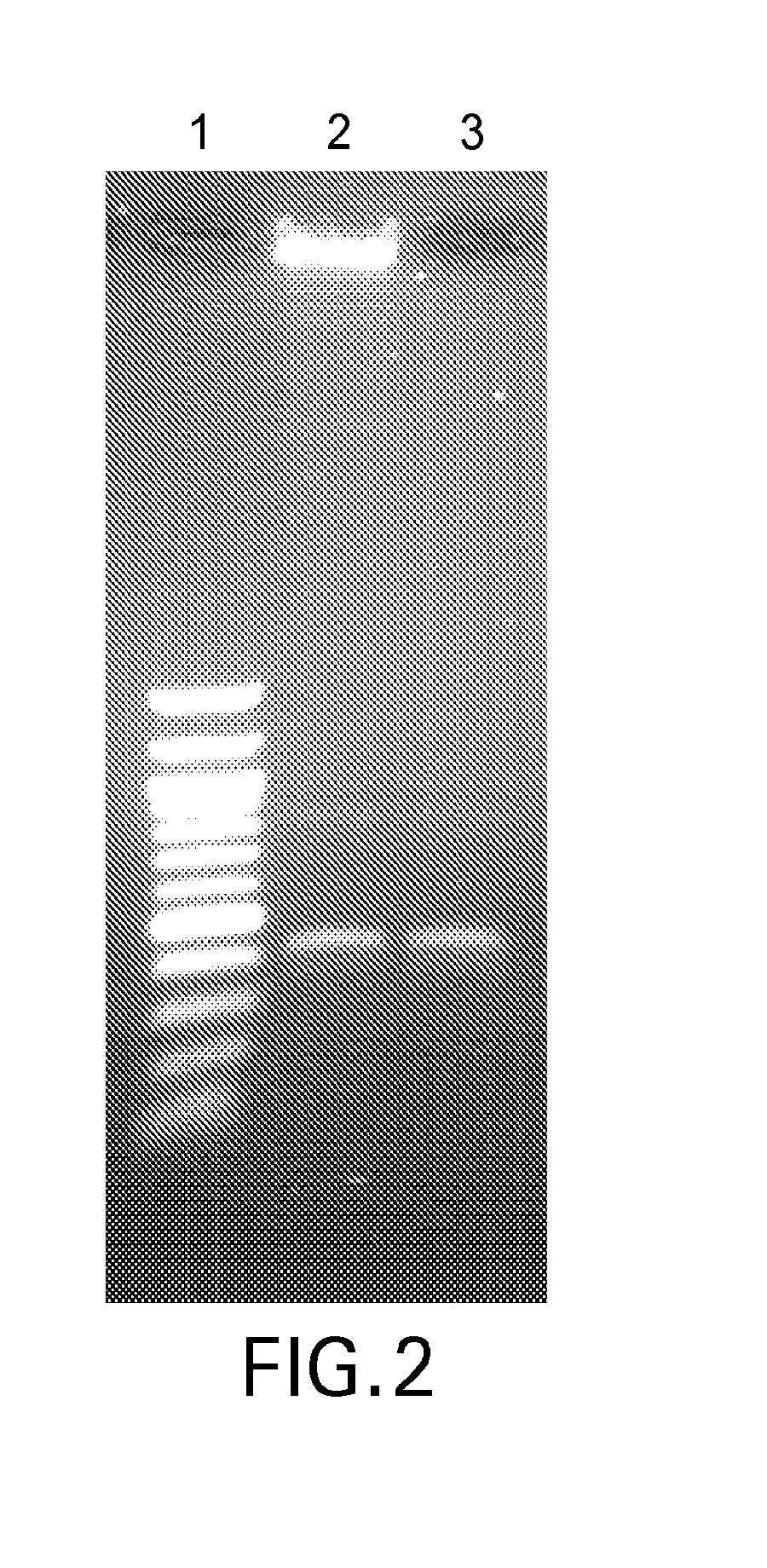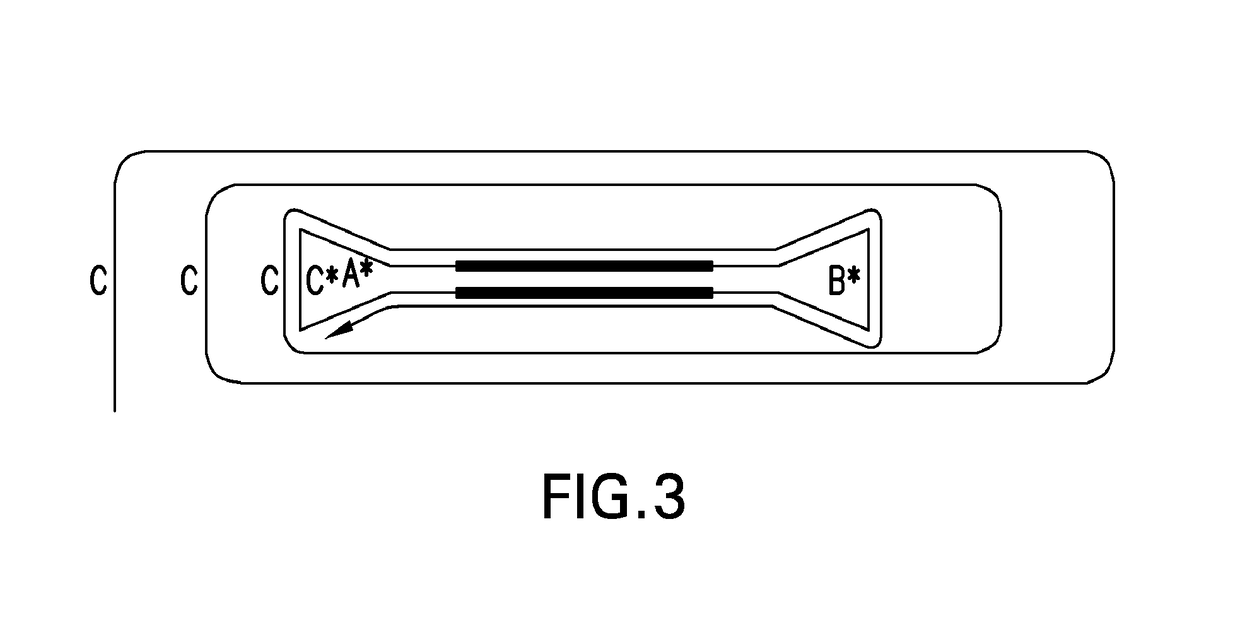Systems and methods for clonal replication and amplification of nucleic acid molecules for genomic and therapeutic applications
a technology genomes, applied in the field of clonal replication and amplification of nucleic acid molecules, can solve the problems of inability to determine the combination of sequence variants of the same dna molecule, inability to solve haplotype information across the entire genome, and inability to solve computational methods. problems such as insufficient pedigree information of biological samples
- Summary
- Abstract
- Description
- Claims
- Application Information
AI Technical Summary
Benefits of technology
Problems solved by technology
Method used
Image
Examples
example 1
[0112]The size independence of dumbbell templates containing two different hairpin structures was demonstrated. A sample DNA, the pUC18 vector was amplified with a set of primers (i.e., forward: 5′-GGA TCC GAA TTC GCT GAA GCC AGT TAC CTT CG and reverse: 5′-GGA TCC GAA TTC AGC CCT CCC GTA TCG TAG TT) to yield a 425 base-pair product. The 5′-ends of each primer contained both BamHI and EcoRI restriction enzyme sites. The PCR product then was digested with EcoRI to render 5′-AATT overhangs and purified with a QIAquick PCR purification kit. Hairpin structure 1 (5′-AATT GCGAG TTG CGA GTT GTA AAA CGA CGG CCA GT CTCGC) was formed by heating to 50° C., following by cooling, that allowed the oligonucleotide to self-anneal at the underlined sequences, yielding a 5′-AATT overhang. The loop structure contained the M13 universal primer sequence. Hairpin structure 1 and pUC18 PCR product were combined in a 10:1 molar ratio, respectively, and treated with five units T4 polynucleotide kinase at 37°...
example 2
[0115]Genomic DNA can also be used as a starting sample. For example and without limitation, purified genomic DNA from HapMap sample NA18507 can be obtained from Coriell Cell Repositories and sheared using standard next-generation sequencing methods (i.e., using a Covaris E210R device) and then size-selected for fragments in size increments of 0.5, 1.0, 2.5, 5.0, 7.5, and 10.0 kb. Similar to that described above, the DNA sample can be subjected to fragmenting to produce the different size DNA fragments, quantification of the starting number of fragments, ligation of hpA / hpB using identical conditions, and enrichment for hpA-fragment-hpB dumbbell templates. The enrichment factor would be determined using dual-labeled fluorescence microscopy to enumerate colocalized fluorescent signals and comparing that number to the total number of fluorescent signals. The Nikon Eclipse microscope analytical tools can perform a number of analyses, including intensity measurements, colocalization of ...
example 3
[0118]Replicating dumbbell templates were also created from large fragmented, dA-Tailed genomic DNA. Here, hairpins were attached by TA-cloning and blunt end ligation. The TA-cloning approach integrates nicely into the majority of current NGS platforms. We have designed Hairpin 2 (HP2)
(5′- / Phos-CTTTTTCTTTCTTTTCT GGGTTGCGTCTGTTCGTCTAGAAAAGAAAGAAAAAGT)
with a “T”-overhang. Human genomic DNA (500 ng) was fragmented using the Covaris G-tube to achieve tightly defined fragment length populations, as shown in Lanes 1 and 2 of FIG. 5. This genomic DNA was then end-repaired and dA-Tailed using the End-Preparation Module of the NEBNext Ultra DNA Library Prep Kit. HP2 was self-annealed similar to HP1, and ligated to the repaired genomic DNA using Blunt / TA Ligase Master Mix (5:1 molar ratio). Excess HP2 and unligated genomic DNA were removed using Exonucleases III and VII.
[0119]The resulting dumbbell templates were purified using Qiaex ii beads and an RCR reaction using a unique primer (5′-AAAA...
PUM
| Property | Measurement | Unit |
|---|---|---|
| haplotype structure | aaaaa | aaaaa |
| size | aaaaa | aaaaa |
| fluorescent | aaaaa | aaaaa |
Abstract
Description
Claims
Application Information
 Login to View More
Login to View More - R&D
- Intellectual Property
- Life Sciences
- Materials
- Tech Scout
- Unparalleled Data Quality
- Higher Quality Content
- 60% Fewer Hallucinations
Browse by: Latest US Patents, China's latest patents, Technical Efficacy Thesaurus, Application Domain, Technology Topic, Popular Technical Reports.
© 2025 PatSnap. All rights reserved.Legal|Privacy policy|Modern Slavery Act Transparency Statement|Sitemap|About US| Contact US: help@patsnap.com



